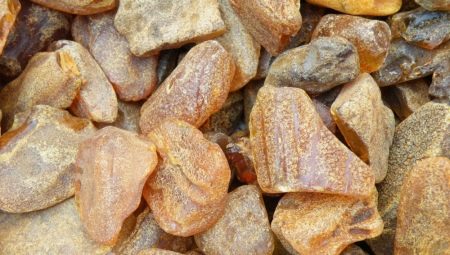The mineral, which looks like wood resin, has been of interest to researchers for many centuries. Amber was known by people of the prehistoric era. Pliny the elder, for example, believed that this was a petrified resin. Agricola supported the ancient philosopher, and even Lomonosov came to this conclusion. Centuries have passed. As modern scholars explain the origin of amber, we learn by looking at current sources.
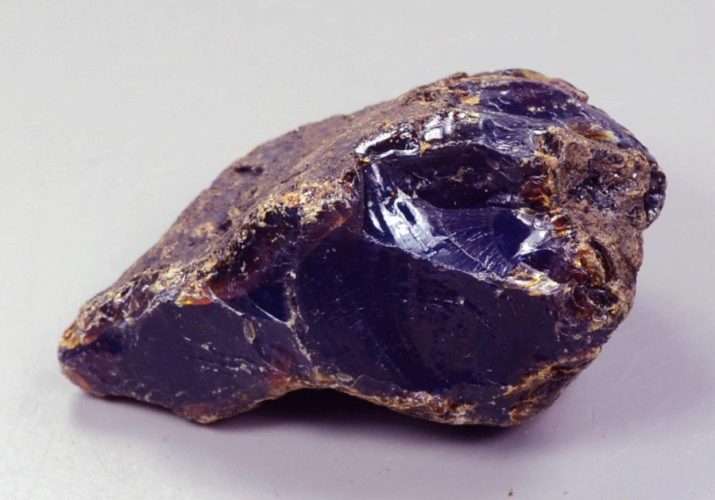
Process description
About 50 million years ago, even before the appearance of man on Earth, in what is now Sweden, part of the Baltic was land. And this is an important circumstance for understanding the processes of the origin of amber in nature.
The first step in the formation of the mineral is the allocation of resin from coniferous trees. This was most likely due to a sharp warming of the climate. Pine trees were highly sensitive to climate change. When hurricanes and thunderstorms began, pines secreted a special resin-gum.
It worked better than an antibiotic: the resin was dried up, forming a firm, smooth crust at the site of damage.
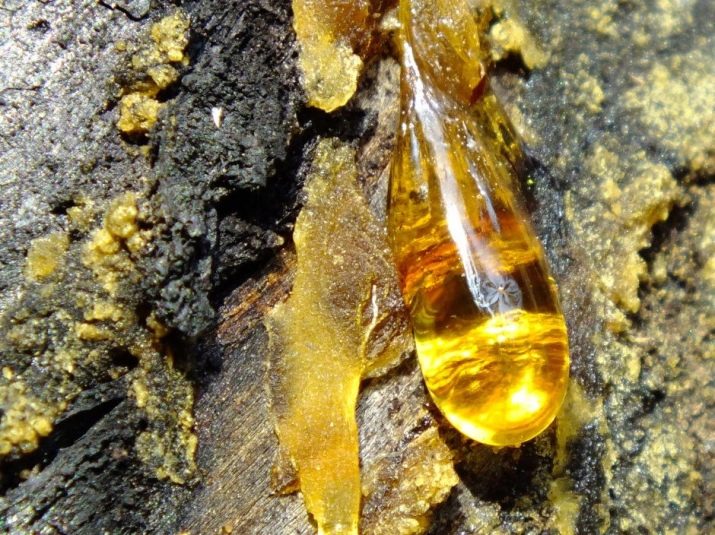
A thick and very sticky liquid led to the formation on the trunks of nodules, drops, clots, which, under the weight of their own weight, ended up on the ground. The bulk of the resin flowed from the pine during spring windbreaks. But rodents, not sparing pines, caused tree injuries, and densely flowing resin was taken to "heal" the wounds.

The resin separation process could be completed and started again, which led to multilayer accumulations of resin. Insects could sit on the resin, they stuck to the sticky liquid, and remained there. Forever.
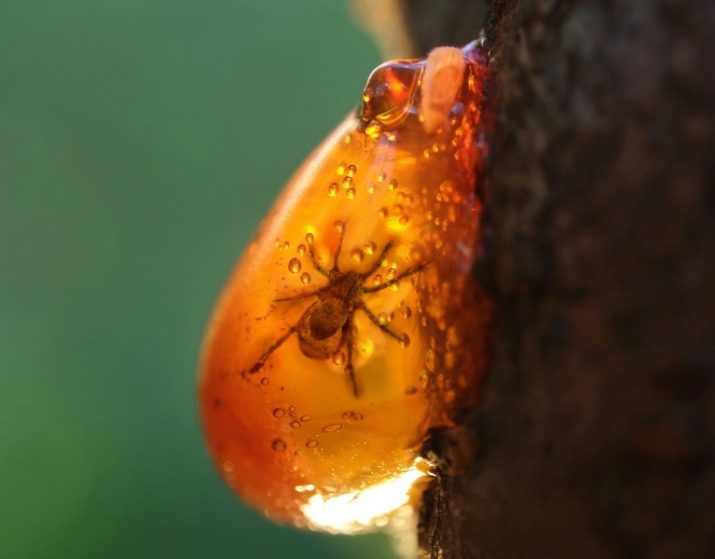
Burial of resin
So you can call the second stage of the formation of amber. This process is due to physicochemical changes. It was very important in what specific conditions the resin would be. If the soil was dry, then oxygen took an active part in the transformation of gum: its stability increased, its hardness increased.
But the wetlands did not contribute to this, because there the resin remained fragile.

Then there is erosion, transfer and deposition of resin in water. Conditions that could become necessary for the formation of amber are associated with the hydrodynamics and geochemistry of the basin.
In order for amber to form in nature, special waters are needed - silt, with oxygen, rich in potassium. When these waters come into contact with the resin, succinic acid and even esters of this acid appear in it. At the end of these difficult processes, not only amber itself is formed, but also glauconite. And the definition of the latter led researchers to the idea of weakly alkaline and weakly reducing environments.
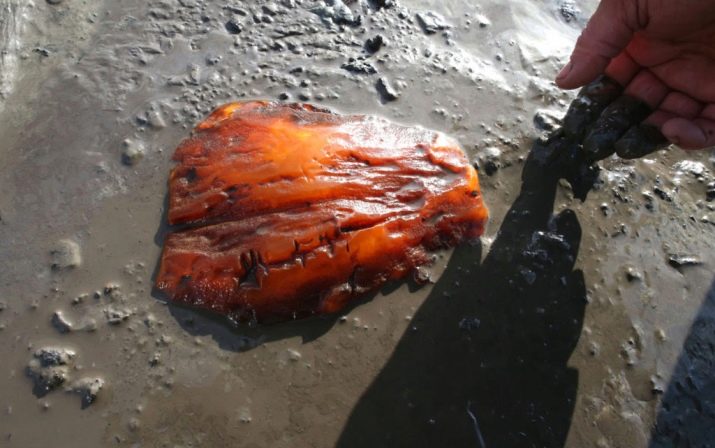
These transformations led to the fact that the resin solidified significantly, became not as soluble as initially, its viscosity and temperature indices of melting increased. Small molecules in the resin have become one macromolecule.
Thus, amber appeared, which is a high molecular weight compound.
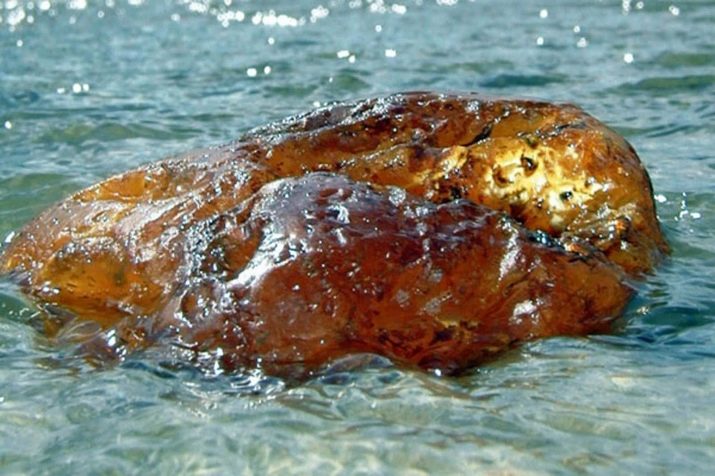
The climate needed for its formation
The climate in northern Europe, where amber was formed millions of years ago, was similar to the current climatic conditions of the southern European part and subtropics. The average annual temperature did not fall below plus 18 degrees.
What else can be said about the climate in which amber is formed:
- not very high illumination of the forest, the light came up a little on the lower branches because of the upper closed crown;
- vegetation did not allow ultraviolet to approach the soil;
- forest soils were sandy, covered with a layer of soft soil;
- the air is almost oversaturated with water vapor that rose from moist soil.
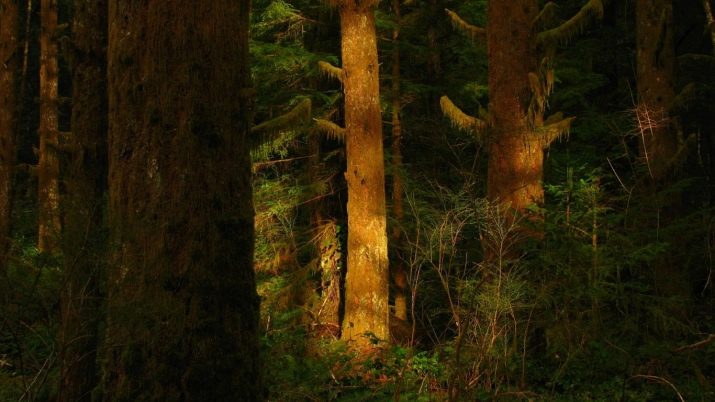
In such a climate, everything favored the development of lush vegetation. There is even such a thing - "amber forest". This is a complex plant community that is difficult to characterize even with very detailed descriptions. Some pines there, according to some scientists, were up to twenty species.

After the climate became much harsher, the "amber forests" disappeared. Most of the territory they occupied went into the ocean. Only amber, a resin that was incredibly petrified, remained a witness to prehistoric times. Amber “remembers” the planet even before the appearance of man.
It turns out that the stone became an artifact, and it also opened the door to modern scientists for a very long past, helped restore the picture of “amber forests” with their unique flora and fauna.
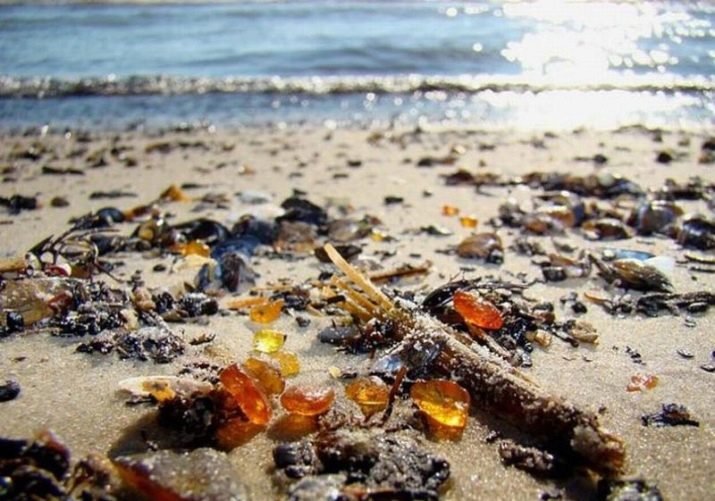
Physical properties of stone
The hardness and melting temperature of amber is higher than that of the best varieties of copal. It is proved that the yellow-honey mineral is soluble in terpene and organic hydrocarbons. In its natural occurrence, amber can be found in the form of fragments of various sizes, which resemble the resinous secretions of conifers in shape.
The density of amber is almost equal to the density of sea water: in salt water, the mineral floats up, and in fresh water it drowns. Such a circumstance explains the stability and indelibility of the stone, which undergoes multiple transfer, overwashing, reburial, and all this is tens of millions of years.
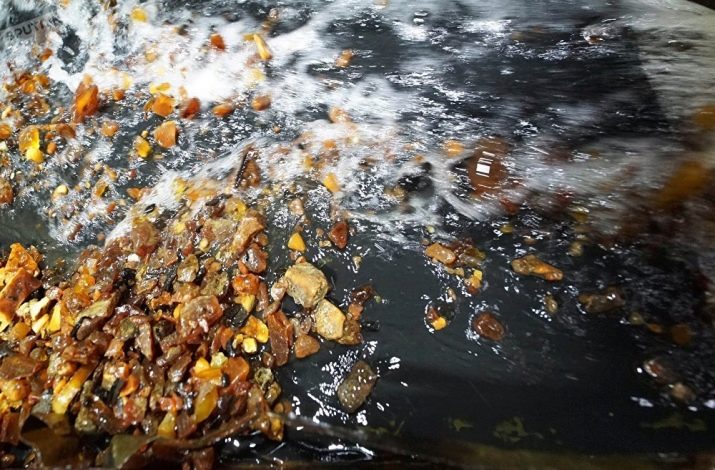
There are other physical properties of the mineral.
- Amber melts on a candle flame, and begins to boil at a temperature of 250-300 degrees. Heating forces the mineral to smolder, burn with a smoky flame. The smell will be pleasant, resinous. By the way, this is the best way to distinguish genuine amber from a fake - heating a fake will certainly not bring any resinous aroma.
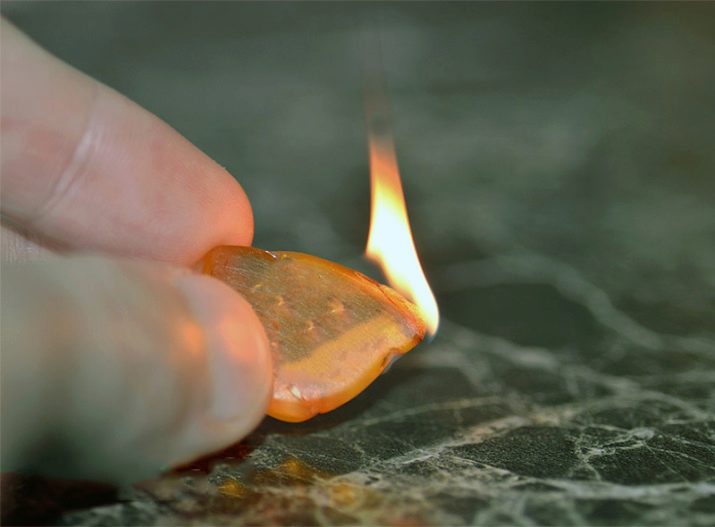
- During friction, amber is electrified, attracts small objects, charges with static electricity. And another interesting historical fact is connected with this: the ancient philosopher Thales of Miletus discovered this property of amber. Researchers, however, picked up the discovery of the philosopher, saw blue sparks when rubbing the stone with wool, and called these sparks an electron. And the electron, by the way, is the Greek name for amber.
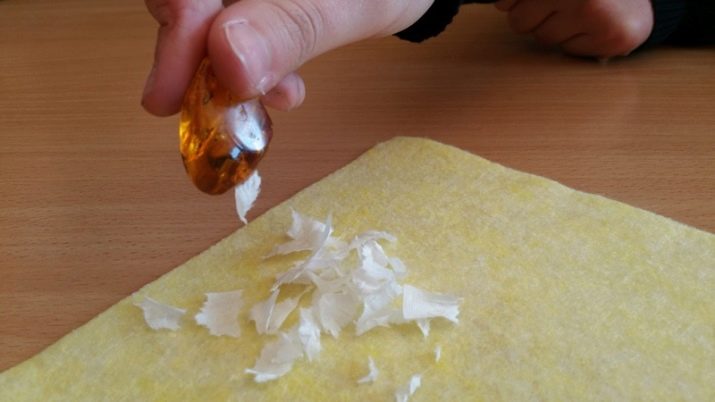
- If you ask, what is the color of amber, the answer will be unequivocal - yellow. But experts counted about two hundred color shades, enclosed in a fairly wide range of colors. Under the influence of the sun, amber will glow. The luster of the stone is glass, tar, conch shell and uneven.
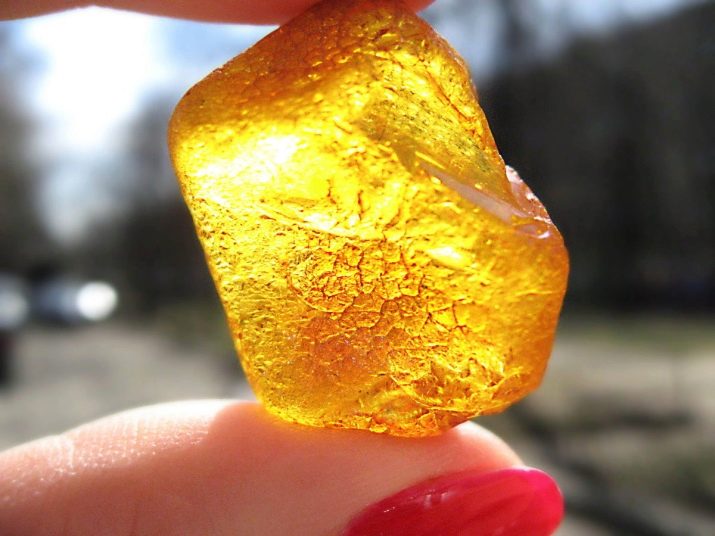
- Air bubbles observed in amber include about 30% oxygen.
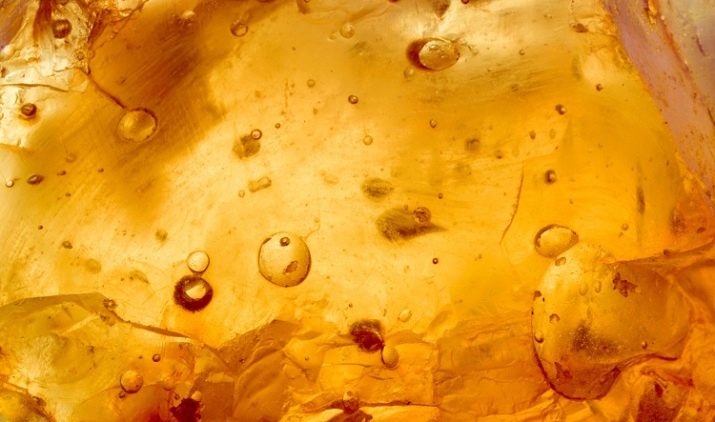
In one amber drop - evidence of events not just many years ago, many millions of years old.
Bugs, mosquitoes, butterflies, lizards, leaves, flowers, pine cones and other organic residues preserved in amber make the mineral so unique and valuable for science. It turns out that this stone is not just beautiful, its formation is more interesting than its decorative sides.
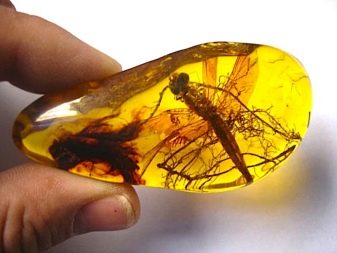

Mining locations
This is not to say that all amber deposits have been sufficiently explored. The Primorsky deposit has detailed characteristics, which can not be said about others.
There are primary and secondary deposits. The first ones are multifactorly related to places of coal mining. The distribution of amber can not be called uniform. These are allochthonous deposits (these include Fushunskoye, Uglovskoye, Alaska). Secondary (placers) accumulations of stone are in some way distant from the places of the initial occurrence. There are a lot of types of such placers. The main place for the production of ornamental amber is the Baltic-Dnieper province (the emphasis is not on the Baltic Sea, but on the territory from the North Sea to the Black Sea with the seizure of Denmark, Poland, and also Germany, Ukraine, Belarus).

The largest in the world is the Primorsky deposit, which is not located in Kaliningrad itself, of course, but 40 km from it. This deposits has been known since the Paleolithic.
Each field should be studied in detail, and today researchers are focusing on this. Amber is a wonderful ornamental stone, so it makes sense to study places where it can be mined and make mining technologies more and more perfect.
Scope of application
The main area of use is jewelry production. Mineral jewelry is very beautiful and certainly unusual. It is processed in a special way, giving it shape, shine and radiance. You can buy a small pendant made of amber, or you can buy chic beads, earrings, rings and bracelets. If the frame for the stone is precious, it will look great, but a simple metal is quite suitable, because in the beads and earrings the main thing is the stone itself.
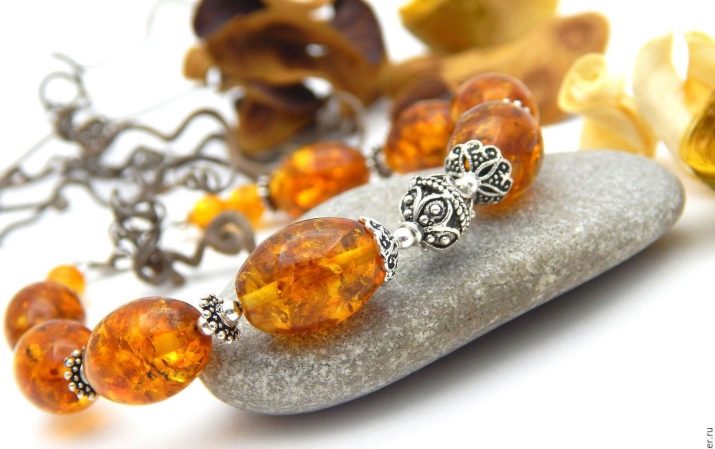
The most striking, eye-catching items are amber with fragments of insects, feathers and bubbles.
These are, indeed, valuable jewelry that makes you the owner of a unique artifact.
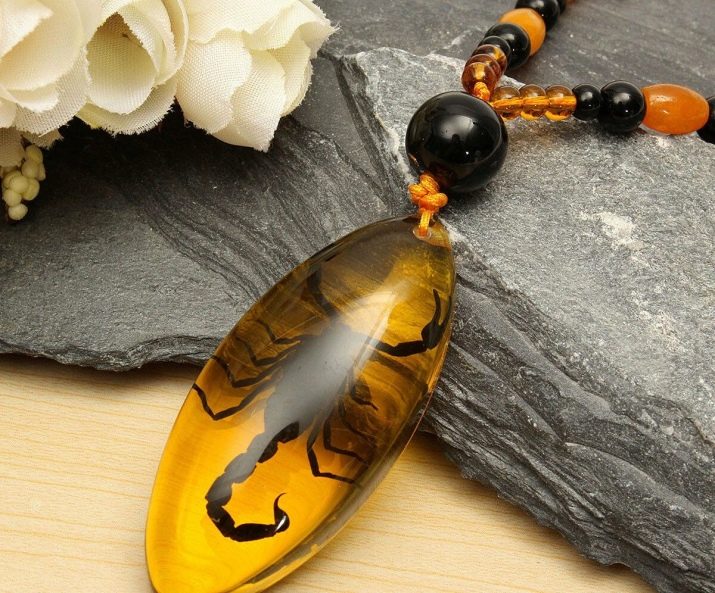
For souvenirs, the mineral is also used: figurines and caskets, clocks and chess, pyramids are made of natural amber (or interspersed with it). Amber plates, spoons and forks are made manually. It is believed that this dish has a neutralizing properties. Mostly they acquire it because of beauty, solar glow.
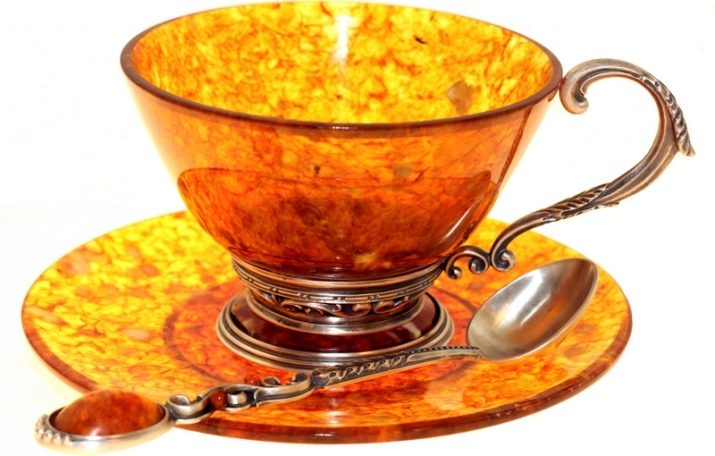
Stone is also used in medicine in the form of amber oil:
- in the treatment of injuries - sprains, bruises, for warming up muscles;
- for massage of different parts of the body (most often the vertebral sections);
- for grinding with pneumonia, bronchitis, colds;
- for grinding with diseases of the musculoskeletal system.
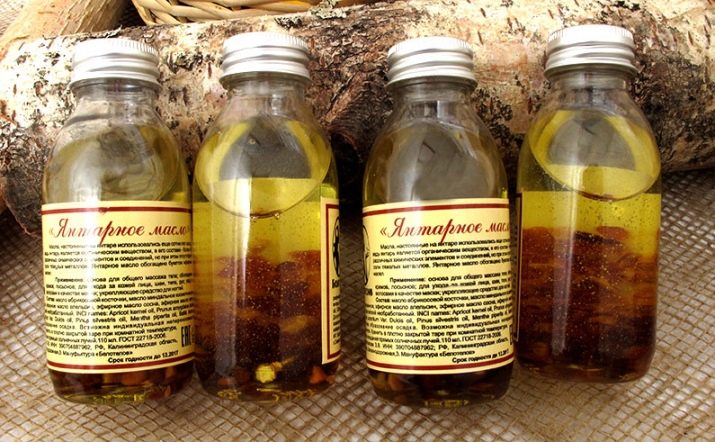
But amber powder is used in cosmetology. It has a beneficial effect on the dermis, removes pigmentation, and rejuvenates. From this powder, by the way, amber powder is used, which is used to treat gums.

Waste from stone processing is often the decor in the paintings.
Waste from stone processing is often the decor in the paintings. Finally, there is such a masterpiece of art as the Amber Room, which is not in vain ranked among the wonders of the world.
Amber, its properties and origin is a topic that has not yet been exhausted; it is being studied by serious researchers, children and adults who are not indifferent to biology.

See how the amber is mined in the next video.
